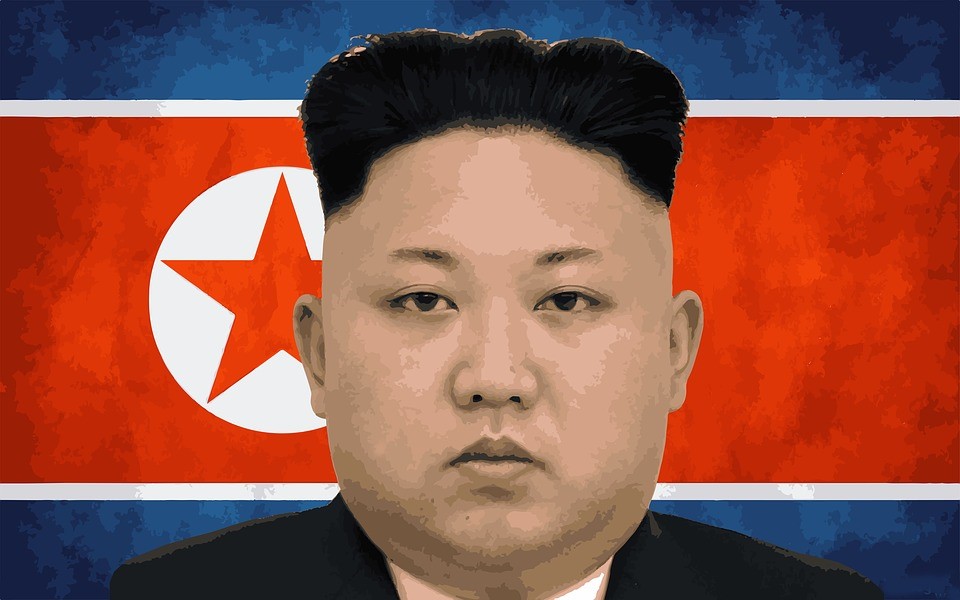What do submarines, volleyballs, and North Korean nuclear missiles have in common? Personnel are back on the job at the Punggye-ri Nuclear Test Facility, according to Joseph S. Bermudez Jr., Victor Cha, and Jennifer Jun of the Center for Strategic and International Security (CSIS). They can be seen in satellite imagery playing volleyball outside their labs and the administration building last Tuesday as they did in 2017 when the nuclear program was active. The test site is located in the mountains 2 miles west of the Hwasong Concentration Camp in the northeastern part of the country. The Punggye-ri facility has served as a test site since 2006 when North Korea detonated its first nuclear bomb.
Western analysts now expect North Korea may conduct a seventh nuclear test as early as next month. The decision will be up to President Kim Jong-un. Current satellite imagery indicates that preparations are well underway [for a nuclear test] and should not be discounted as insignificant activity,” according to an April CSIS report. It suggests the North’s nuclear program is again very active after five quiet years. There are signs of construction of new buildings, the movement of lumber, and additional equipment and supplies being stored outside the new entrance to Tunnel No. 3 and nearby areas.
Since President Biden assumed office, the North Korean regime also has ramped up other areas of research, including 13 ballistic missile tests. Kim has the goal of achieving a “credible, survivable nuclear weapons delivery system that can target the US homeland,” according to Victor Cha and Fraser Katz, writing in a CSIS commentary on Friday. In January Kim Jong-un delivered remarks to the Eighth Party Congress of the Workers’ Party of Korea in which he openly mentioned in detail that he intends to perfect the guidance technology for a multi-warhead rocket. Kim also stated at the time that the regime was working to attain an advanced capability for making a preemptive and retaliatory nuclear strike by further raising the rate of precision to “pinpoint accuracy.” Kim announced at the Congress that North Korea also is developing “solid-fuel engine-propelled intercontinental underwater and ground ballistic rockets.”
Earlier this week during a military parade in Pyongyang, Kim spoke about the increase in strength of the country’s nuclear forces both in terms of quality and scale. Cha and Katz point out that the tenor of the speech this week may be an indication of a shift in the North’s nuclear doctrine, as Kim noted that “our nukes can never be confined to the single mission of war deterrent” and they may be used in an “unexpected second mission” if outsiders violate the North’s “fundamental interests.” There has been little pushback or condemnation of the North as countries in the Western democratic world are concentrating on ongoing kinetic warfare in Ukraine. It also is possible that Kim Jong-un primarily is using the nuclear program to boost his support at home. Advances in the country’s technology have eliminated the need for foreign assistance. New developments could give him a public victory with only the threat of a launch.
Satellite imagery from North Korea’s Sinpo South Shipyard also is showing signs of unusual activity as well. This is the location of the 8.24 Yongung (August 24th Hero) experimental ballistic missile submarine (SSBA). Currently it is within the secure boat basin under a submersible missile test stand with a small harbor tug tied up alongside. Analysts suspect that the 8.24 Yongung submarine plays a critical role in the under-way development of SLBMs, ballistic missile submarine technology, and operational procedures. While moving the SSBA around the shipyard could be part of a strategic deception campaign, CSIS suggests it is more likely due to modification and repair work.
Although the submarine- launch ballistic missile program is not as far along as the country’s ground-launched, multiple reentry vehicle missile research, it could provide North Korea a second leg in a nuclear triad. The final leg, an air-launched nuclear cruise missile, is not close to the capability required for actual use, according to Cha and Katz. They conclude that Kim is just “one launcher shy of being able to saturate the existing US national missile defense system” based on recent US disclosures by technical experts. Kim is picking up the tempo. If the nuclear program develops effective countermeasures, it could further complicate the picture for Washington. Kim has rebuffed the Biden Administration’s offer to meet without preconditions. No one is sure what comes next after the volleyball game ends.
Daria Novak served in the U.S. State Department
